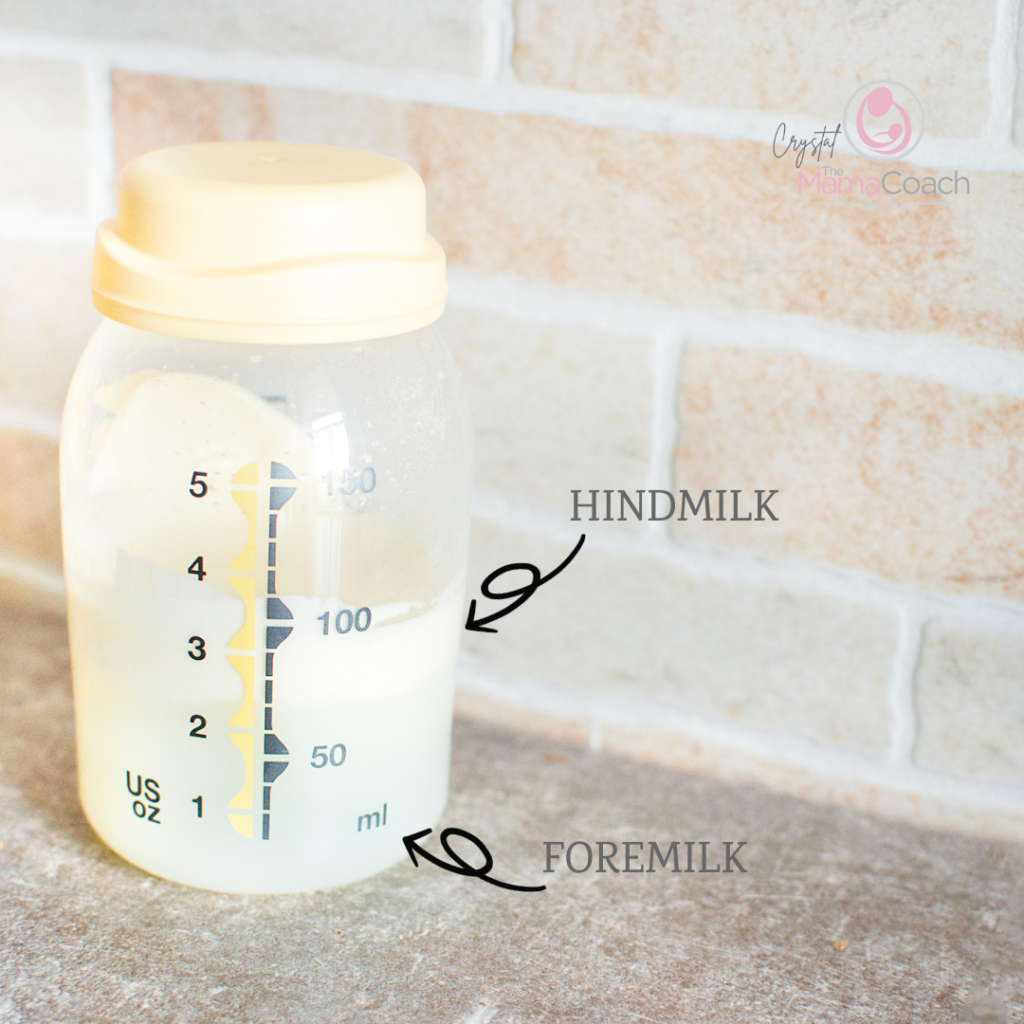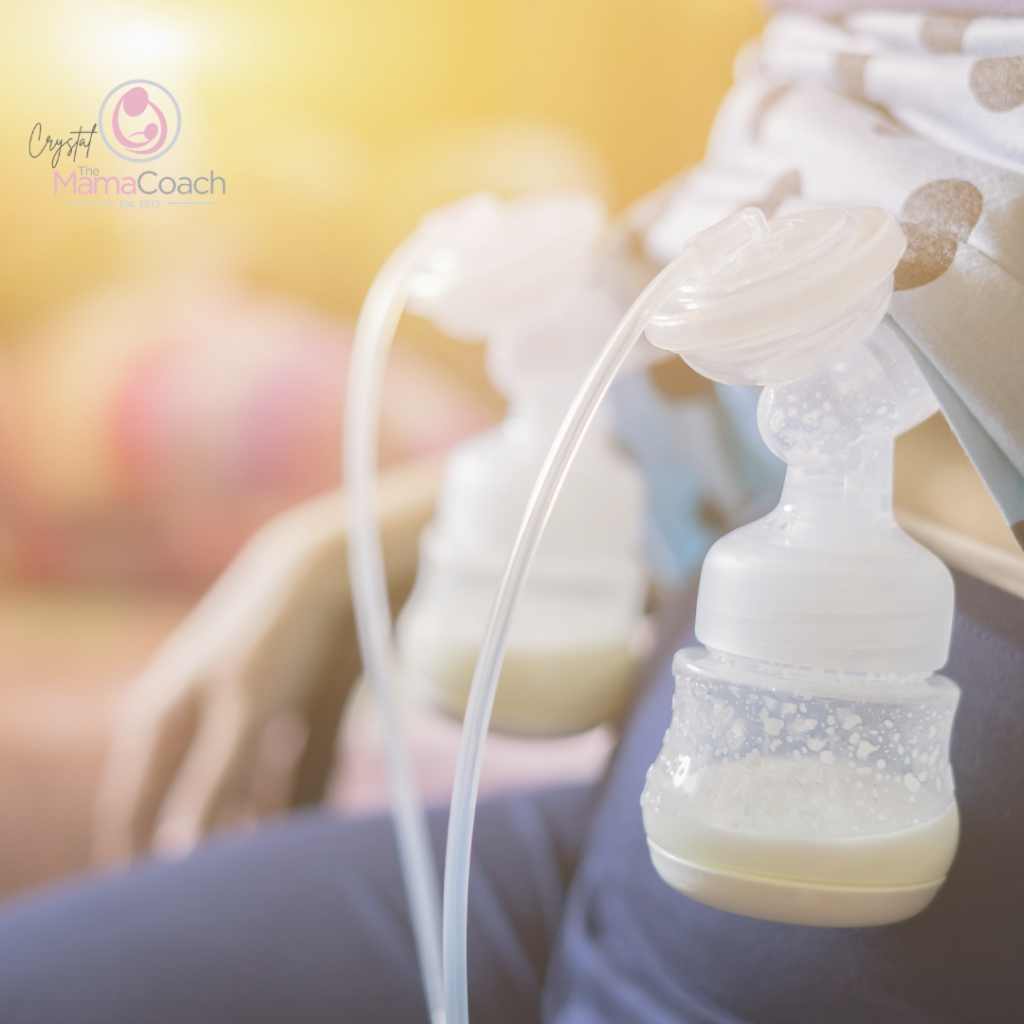The foremilk vs hindmilk imbalance discussion is one of the most common concerns brought up among new moms. Understanding the difference between these two components of breastmilk is important for providing optimal nutrition to your baby. As a maternal newborn nurse, lactation consultant, and mom of four bundles of joy, I’ve navigated the seas of breastfeeding with a mix of uncertainty and success. So let me help you understand the difference.

Breastfeeding: A Journey of Connection
Breastfeeding is a beautiful journey filled with moments of connection and nourishment. But it can also be full of unsure moments, especially when it comes to figuring out the little details of breastmilk composition. Let’s dive into the foremilk vs hindmilk debate and shed some light on why both are equally essential for your little one’s well-being.
Demystifying Foremilk vs Hindmilk
Firstly, let’s clarify what exactly foremilk and hindmilk are. Breastmilk is a dynamic fluid that adjusts its composition throughout a feeding session. Foremilk refers to the milk released at the beginning of a feeding, whereas hindmilk is the milk that follows as the feeding progresses. The key difference is in their fat content, with foremilk being relatively lower in fat and hindmilk richer and creamier.
The Power of Fat in Breastmilk
Now, some may wonder, why the fuss about fat content? Well, here’s where the magic happens. Breastmilk is a nutritional powerhouse, providing the perfect balance of proteins, carbohydrates, fats, vitamins, and minerals tailored specifically for your baby’s needs. While foremilk quenches your baby’s thirst with its higher water content, hindmilk steps in to satisfy hunger and promote healthy weight gain with its higher fat content.
Foremilk and Hindmilk: A Balanced Meal for Your Baby
Imagine foremilk as the refreshing appetizer to whet your baby’s appetite, while hindmilk serves as the hearty main course, ensuring your little one leaves the table feeling fully satisfied. Just like a well-rounded meal for us adults, both components are necessary for your baby to thrive.
The Natural Rhythm of Foremilk and Hindmilk
Transitioning between foremilk and hindmilk during a feeding session is a natural process. It is managed by your baby’s suckling rhythm and duration. As your baby feeds, foremilk steadily changes to hindmilk. Just like a deep lake, the composition of your breastmilk changes as your baby feeds. The first milk they receive, the foremilk, is like the surface layer – thirst-quenching and light. As your baby nurses longer, they reach the richer hindmilk, similar to the deeper, more nutritious water below. This is how they get the right mix of nutrients they need.
How Do You Know If Your Baby is Getting a good balance of Each Milk?
It’s natural for us mamas to worry if our babies are getting enough nutrition. Sometimes, a foremilk vs hindmilk imbalance can occur if your baby doesn’t nurse for long enough. In addition, frequent switching between breasts can mean baby fills up on foremilk before reaching the richer hindmilk. This can lead to gas, fussiness, green/frothy stools and slow weight gain. The solution? Encourage longer nursing sessions on one breast at a time to ensure baby gets that all-important hindmilk. Breast compressions during the feed can help, as well as using the hands-on pumping technique during pumping sessions. Signs of a good latch and swallowing will ease concerns, and a lactation consultant can offer personalized guidance.

Beyond Nutrition: The Bond of Breastfeeding
Breastfeeding is not just about nutrition or foremilk and hindmilk, it’s also about fostering a deep bond between mother and baby. The act of nursing provides comfort, security, and a sense of closeness that goes beyond what we can describe. As a lactation consultant, I’ve witnessed countless moments of pure joy as mothers gaze lovingly into their baby’s eyes while nourishing them at the breast.
Finding Humor in the Journey
But let’s not forget the comedic side of breastfeeding, shall we? Picture this: You finally settle down for a peaceful nursing session when suddenly, your little one decides to perform acrobatic moves worthy of Cirque du Soleil. Check out this IG reel of me feeding my toddler. 😁 If you’ve breastfed an older infant you know what I’m talking about! LOL! It’s a balancing act like no other, with flailing limbs and unexpected twists keeping you on your toes (literally). Ah, the joys of motherhood! You won’t even have time to think about foremilk vs hindmilk imbalance! Haha!
Embracing the Benefits of Breastfeeding
As much as we may joke about the challenges of breastfeeding, it’s essential to recognize the incredible benefits it offers both mom and baby. From boosting immunity to reducing the risk of chronic diseases, breastmilk is nature’s gift to newborns, packed with goodness that no formula can duplicate.
Celebrating the Journey of Breastfeeding
In the midst of this foremilk vs hindmilk debate, it’s crucial to remember that both are equally important. Your baby needs both of optimal nutrition. One without the other would be like trying to navigate parenthood without a sense of humor. I guess it’s possible, but definitely not as enjoyable. Haha!
So, to all the new moms out there moving through the rollercoaster ride of breastfeeding, I have a word of advice. Trust your instincts, cherish the journey, and don’t forget to laugh along the way. Because in the end, it’s not just about foremilk or hindmilk. It’s about the unconditional love that flows between you and your little one with each precious drop of breastmilk.
Don’t hesitate to reach out if you’re having lactation struggles. Book a free call with me to discuss your concerns.




